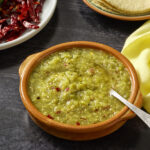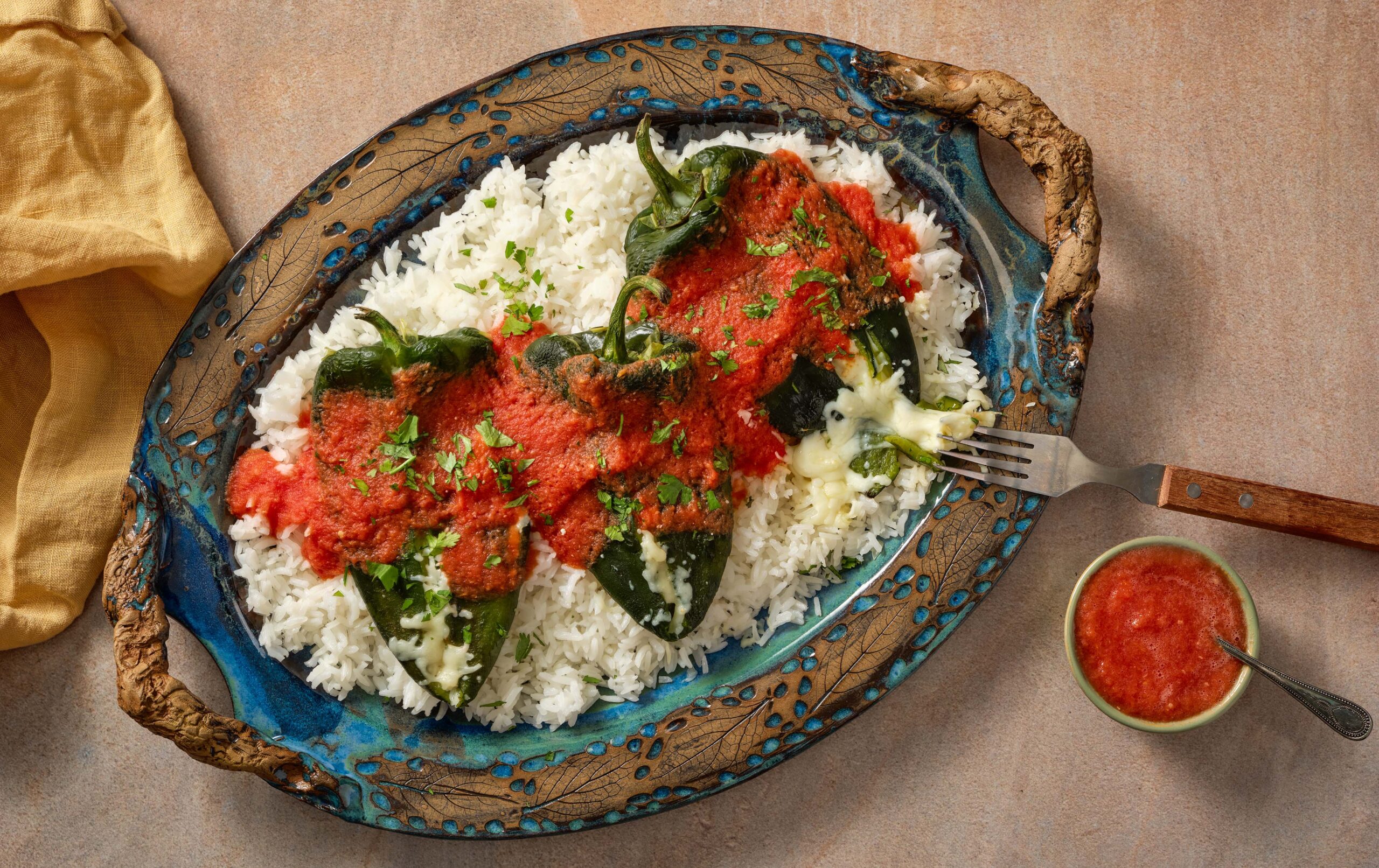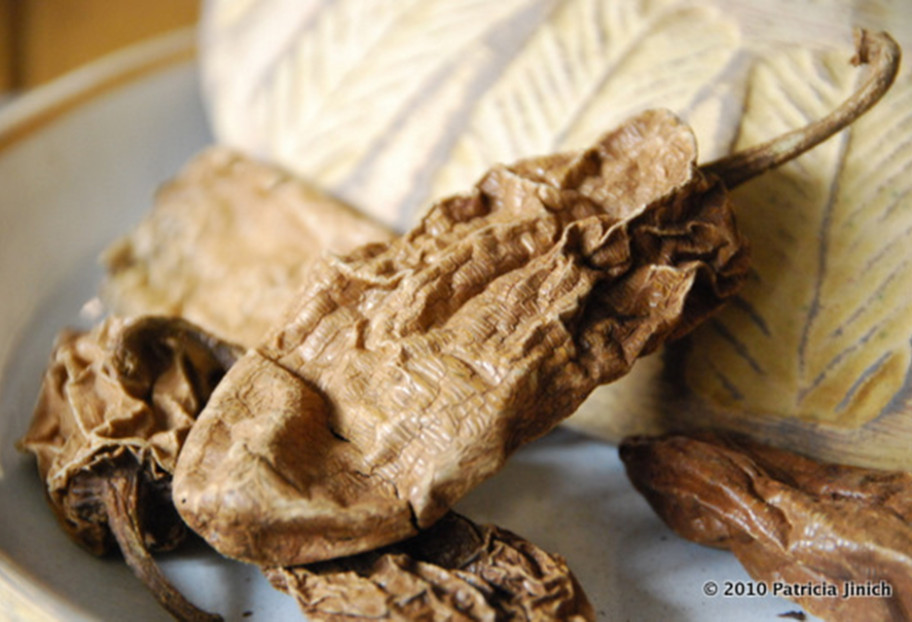Pepita Habanero Pesto
Ingredients
- 1/3 cup raw and hulled pumpkin seeds or pepitas
- 1/3 cup pine nuts
- 1 habanero stemmed
- 1 cup cilantro leaves
- 3 cups basil leaves
- 2 small garlic cloves
- 1 cup olive oil
- 1/2 cup Parmigiano Reggiano, Pecorino Romano, or queso Cotija
- 1/2 teaspoon kosher or coarse sea salt or to taste
Instructions
- On a preheated small skillet, comal, or griddle, set over medium low heat, gently toast the pumpkin seeds and pine nuts for just 2 to 3 minutes, stirring often, until they start changing color, don’t let them brown.
- Scrape into the jar of a blender or food processor, add the habanero, cilantro, basil, garlic, olive oil, cheese and salt. Puree until smooth.
















































